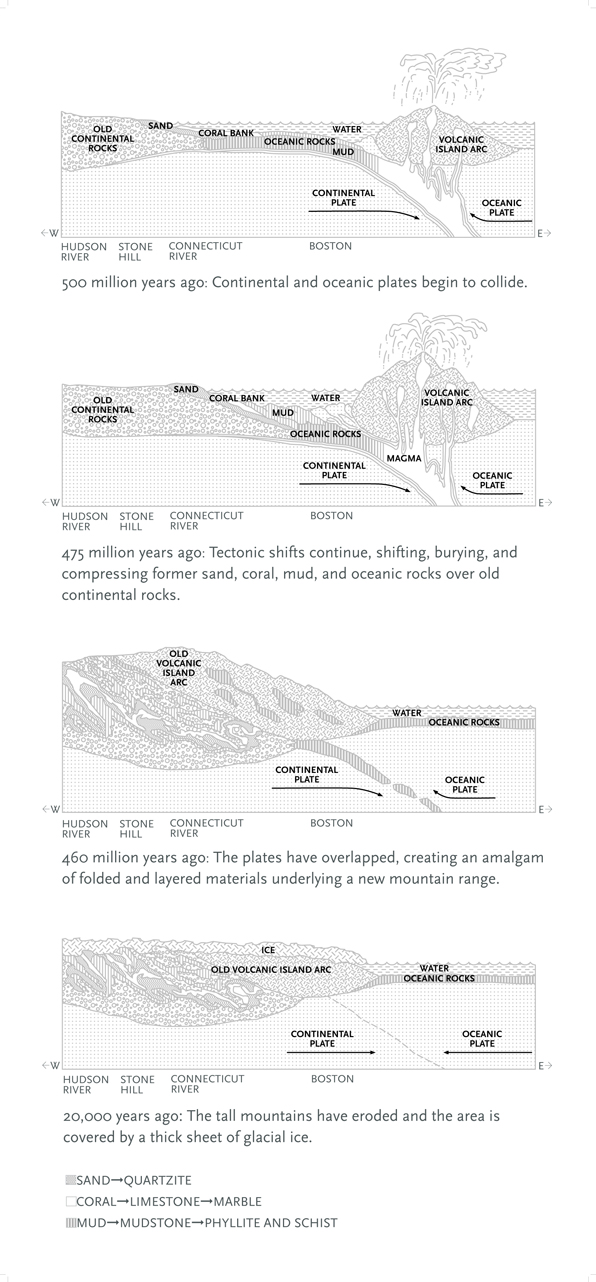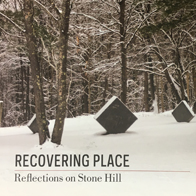
July 4–October 10, 2016
the ancient formation of stone hill
Long before humans began inhabiting Stone Hill, the area was formed gradually by dramatic geologic, meteorological, and biological processes. About 500 million years ago, shifting tectonic plates crashed together to obliterate a former seashore located east of what is now the Atlantic Coast and folded materials to the west, forming a range of mountains more than 14,000 feet high. In the process, the distinctive types of rocks found locally today were formed from pressure, heat, and time: sand from a former shoreline first became sandstone and then became quartzite; coral reefs became limestone and then marble; and the muddy sea bottom became mudstone and later phyllite and schist. Conglomerate is a mixture of all these rock types. The once huge mountains eroded over some 400 million years, leaving their jumbled core close to the surface and exposed to the elements. During the peak of the last ice age 20,000 years ago, this region was covered by a mile-thick glacier that moved rocks and sediments ranging from the size of school buses to the fine particles that comprise clay. As the ice retreated northward, the surrounding valleys temporarily flooded and became a lake, turning the twin summits of Stone Hill into islands. Glacial Lake Bascom, as it is now known, drained into the Hudson River around 16,200 years ago. These geologic processes combined to create the basis for the landscape we know today.
Bedrock geologic map of the Williamstown and North Adams quadrangles, Massachusetts and Vermont, and part of the Cheshire quadrangle, Massachusetts (U.S. Geological Survey, Miscellaneous Investigations Series Map I-2369, 1993. Map scale: 1:24,000)
Recovering Place: Reflecting on Stone Hill
By Mark C. Taylor
An illustrated book chronicling the land art and sculptures created by Mark C. Taylor at his home in the Berkshire hills, echoing themes found in the exhibition. Supported in part by Herbert A. Allen, Jr. and the Clark Art Institute and published by Columbia University Press. Call the Museum Store at 413 458 0520 to order.



